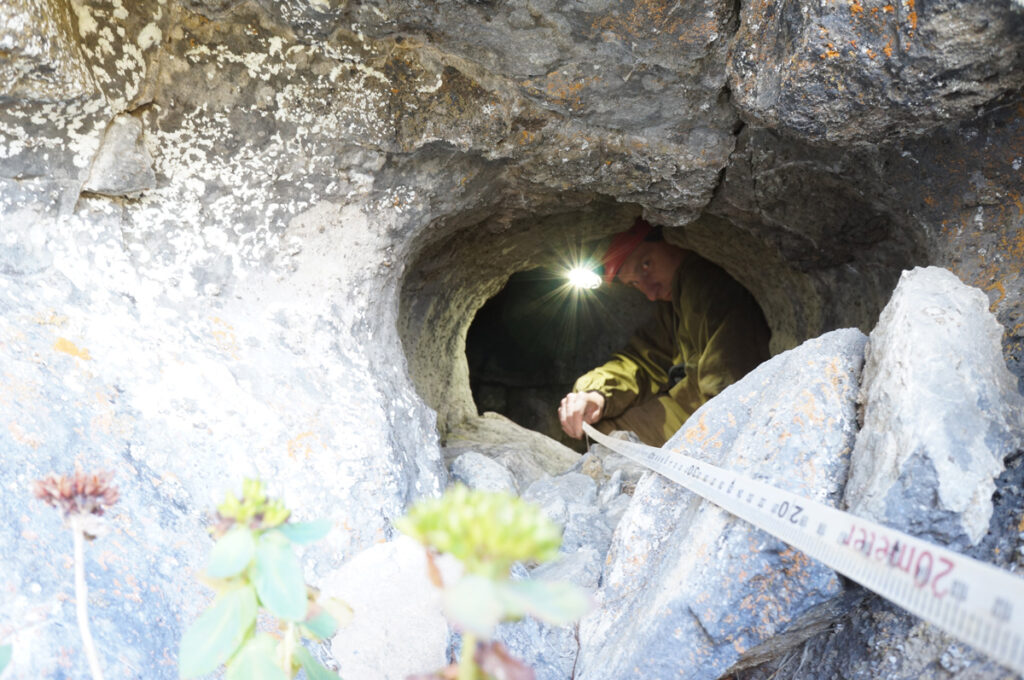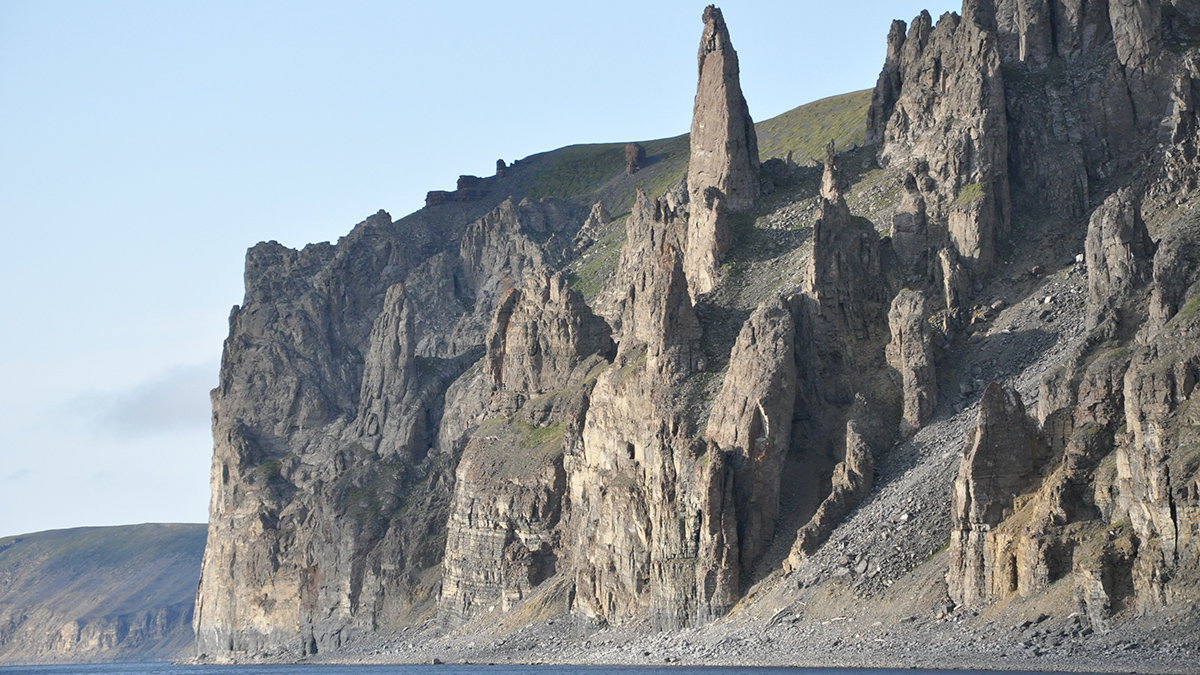About 15% of the land area in the Northern Hemisphere is currently covered by perennially frozen soil known as permafrost. But that has not always been the case. As global temperatures fluctuated in Earth’s past, patches of that frozen soil periodically thawed and refroze.
“Permafrost is a huge reservoir of CO2, and thawing comes with repercussions because it feeds back into future warming.”
A recent study in Nature Communications shows that the Arctic was mostly free of permafrost 8.7 million years ago, when the average global temperature was 4.5°C (8.1°F) higher than it is today.
“Permafrost is a huge reservoir of CO2 [carbon dioxide], and thawing comes with huge repercussions because it feeds back into future warming,” said study coauthor Sebastian Breitenbach, a paleoclimatologist at Northumbria University. Arctic permafrost currently stores twice as much carbon as the entire atmosphere, and because the region is warming faster than the global average, those soils are susceptible to thawing.
In Search of Climate Archives
Breitenbach and his colleagues studied mineral cave deposits from northern Siberia, which is currently underlain by permafrost.
Speleothems such as stalagmites and stalactites form when mineral-rich water percolates through the ground and drips into cave openings, slowly leaving behind calcium carbonate that precipitates out of the water. They can’t grow when the ground above the cave is frozen solid because no water is able to seep through the soil. Any speleothems in the region must have formed when the ground was thawed.
The study was decades in the making. In the early 2000s, Breitenbach and his international group of colleagues were studying caves in a partially frozen region in southern Siberia. At the same time, they were looking for sites with speleothems in the heart of permafrost-covered regions farther north, turning to local communities for information about caves in remote areas. “We started asking hunters, teachers, politicians, bus drivers, anyone who would be out there in the outback,” Breitenbach said. Often, the team would visit a promising area only to find there were no caves there or, when there were caves, no useful speleothems inside them.
“Most of our information for the Miocene comes from marine sediments, so finding good terrestrial archives for this period is fantastic.”
After years of following rumors farther and farther north, they finally struck gold in 2014 at the Taba-Ba’astakh cliffs along the Lena River close to the Arctic Ocean. The team collected 14 speleothems from eroded caves high up in the cliffs and along the beach below.
Using the predictable rate of the decay of uranium into lead and the amounts of each of these isotopes in the samples, the study authors found that the cave deposits were formed 8.7 million years ago, in the late Miocene period.
“Most of our information for the Miocene comes from marine sediments, so finding good terrestrial archives for this period is fantastic,” said Dominik Fleitmann, a geologist and paleoclimatologist at Universität Basel who was not involved in the study. “There are not so many sites because erosion is our enemy. Most of the older deposits are eroded or difficult to date.”
Scientists’ ability to precisely date speleothems makes them incredibly useful as climate records, said Nikita Kaushal, a geologist at the American Museum of Natural History who was not involved with the study. “When you’re looking at past records, you want really good age control on when something happened and for how long, and information on as many climate and environmental parameters as possible.”
By studying the physical and chemical properties of speleothems, scientists can reconstruct the conditions present when the speleothems formed, such as the vegetation cover above, atmospheric circulation changes, local rainfall, droughts, and temperature.

Using the proportions of bonds between certain isotopes, which are affected by the atmospheric conditions present when the mineral-rich water was flowing, the study authors established that average temperatures in the region were between 6.6°C and 11.1°C (44°F and 52°F) when the speleothems formed. That’s about 19°C–23°C (34°F–42°F) warmer than it is today.
Other studies of the same period found that global temperatures were 4.5°C higher than today at the time.
“We know from meteorological data that the Arctic is warming at about 4 times the global average,” Breitenbach said. “The underlying reasons are not entirely clear.” This phenomenon, called Arctic amplification, is likely due to a complex interplay of various factors, including loss of sea ice, air temperature inversion, and ocean heat transport.
A Vulnerable Carbon Pool
As permafrost thaws, the organic matter in the soil begins to decompose, releasing carbon dioxide and methane into the atmosphere. The Intergovernmental Panel on Climate Change estimates 14–175 billion tons of CO2 could be released into the atmosphere by thawing permafrost for every 1°C of global warming.
It’s a process that’s already underway. According to scientists, the upper layers of permafrost were thawing in multiple areas in Svalbard, an archipelago in the Arctic Ocean, in February 2025 as a result of exceptionally high temperatures. The thawing of permafrost is also influenced by several factors beyond temperature, Breitenbach said. “The most important ones are vegetation, snow cover, and wildfire activity.”
Even using conservative estimates, the study authors calculated that the complete loss of permafrost in the Arctic region could release 130 billion tons of CO2 into the atmosphere—and that’s accounting for only short-term emissions from the top 3 meters of thawed soil. “I was quite frightened when I saw these numbers,” Breitenbach said. “4.5° warming is at the extreme end of climate models. It’s not expected to be tomorrow or in the next decades. But even half of this is still drastic.”
—Kaja Šeruga, Science Writer

